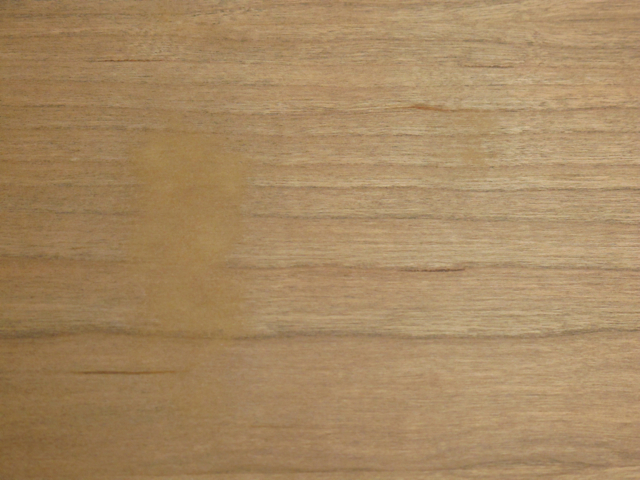We may receive a commission when you use our affiliate links. However, this does not impact our recommendations.

The area just to the left of center shows what a sand through looks like. The grain and figure disappear and look more like a smudge.
You may be aware that I’m not a big advocate of random orbit sanders. I prefer to sand by hand most of the time. I think it’s faster, and it’s for sure safer, especially on veneer.
If you’re gluing down the veneer yourself (maybe using a vacuum press), the veneer you’re using is usually thick enough to require a good deal of effort to sand through. But if you’re using veneered plywood or MDF in your project, odds are the veneer is very thin.
Even on this veneer, it still takes quite a bit of effort to sand through when sanding by hand. But machine tools like a random orbital sander can go through fairly quickly.
The critical thing to do when sanding through veneer is to stop sanding! If the sand-through area is small enough, you may be able to fix it by painting in some of the grain and figure between coats of finish. Small areas are usually fairly easy to disguise. Large areas are impossible.
So the question is, “How do you know when you have sanded through?” The answer is that the grain and figure of the wood disappear, and the disappearing spot grows larger.
It’s common for people to see the spot and think they just need to sand more to remove it. The opposite is the case. Sanding more makes the problem worse.
Be aware of this whenever sanding veneer.
— Bob Flexner
 Want more wood finishing tips from Bob Flexner? Don’t miss “Understanding Wood Finishing” available at shopwoodworking.com.
Want more wood finishing tips from Bob Flexner? Don’t miss “Understanding Wood Finishing” available at shopwoodworking.com.
Here are some supplies and tools we find essential in our everyday work around the shop. We may receive a commission from sales referred by our links; however, we have carefully selected these products for their usefulness and quality.









